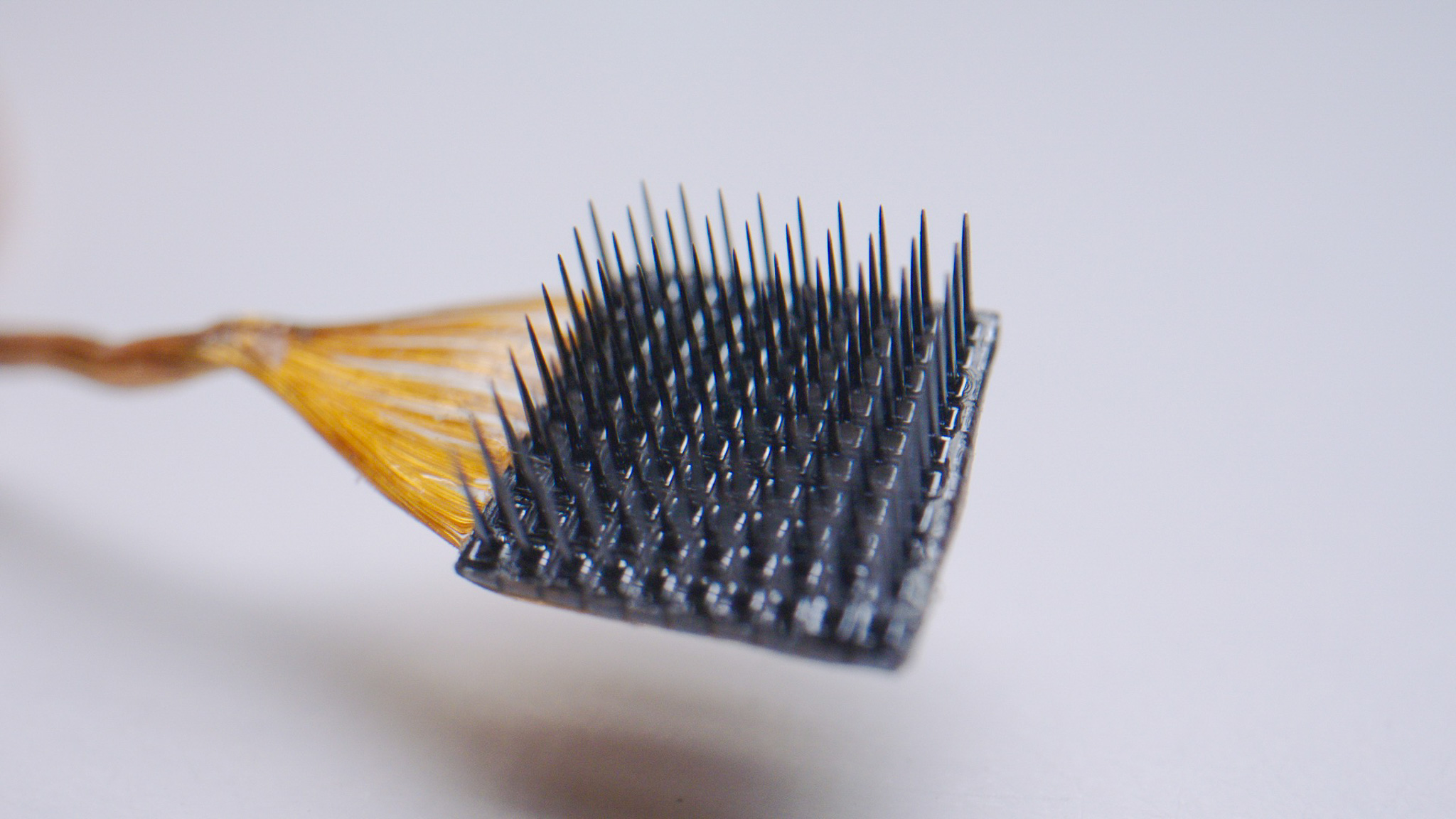Home

01
Join Us, In Saving Lives And Engineering The Future
We are a diverse team of talented people who are dedicated to building technology that radically improves human lives.
With its high-channel count, superior signal-to-noise ratio, and exceptional quality, the Utah Array powers the most ambitious neuroscience research. Utilizing the latest advancements in neurotechnology, its electrodes are capable of recording and stimulating individual neurons or groups of neurons with maximum selectivity.
With over 20,000 peer-reviewed citations and use in over 1,000 labs, the Utah Array has remained the superior tool for cortical recording and stimulation for over two decades. The array has a strong record of safety and effectiveness for a wide range of research applications in both human and animal models.
With up to 96 electrodes per array and up to 1024 channels per system, the Utah Array’s high-density design provides unmatched insight and control; recording and stimulating individual neurons or groups of neurons with minimal invasiveness and maximum selectivity. These electrodes are made from high-quality biocompatible materials and are designed to be durable and long-lasting, making them ideal for both chronic and acute scenarios.
With its high-density design and superior signal-to-noise ratio, the Utah Array enables researchers to perform intricate studies of neural networks and brain functions at an unprecedented level of detail. It has proven to be a valuable tool in research areas such as the study of neural plasticity, cognitive function, epilepsy, neurodegenerative diseases, speech, motor, and sensory neuroprosthetics and brain-computer interfaces.
Experimental Model
– Rhesus Macaque or other larger animals
– Marmoset or other small anumal
– Rat
– Mouse
– In-Vitro
Application
– Cortex
– Peripheral Nerve
Shank Lengths
– 0.5 mm
– 1.0 mm
– 1.5 mmSlanted
Connector Type
– CerePort 128
– CerePort 256
– Omnetics 16-Ch 18-pin .025″ + 6 Guide Pins
– Omnetics 32-Ch 36-pin + 4 Guide Pins
– Other
| Spec | |
|---|---|
| Electrode Pitch | 400 um |
| Channel Count | 16 - 1024 |
| Output Connectors | Omnetics, CerePort pedestal 128/256, Custom |
| Output Conn. dimensions L x W x H |
Output Conn. dimensions L x W x H Omnetics - 7mm x 37mm x 9mm CerePort pedestal 128 (H x Neck Diameter x Base Diameter) - 16.5mm x 12mm x 19mm CerePort pedestal 256 (H x Neck Diameter x Base Diameter) - 16.5mm x 10.7mm x 19mm |
| Standard Electrode Lengths |
0.5 - 1.5 mm (Research) 1.0 - 1.5 mm (Clinical) |
| Impedance | Platinum: 20-800 KΩ, SIROF/IrOx (Sputtered Iridium Oxide Film): 1-80 KΩ |
| Array Dimensions | Customizable from 2 - 12 |
| Multi-Port Options | 1, 2, 3, 4 |
| Metalization | Platinum: 20-800 KΩ, Sputtered Iridium Oxide (SIROF): 1-80 KΩ |
| Wire Bundle Length | Customizable (20 - 130 mm), Wire Bundle Length Options |
| Reference and Ground | Ground Source and Selectable Reference Wires |
| Insulation | Parylene-C |
The Utah Array is a high-channel count microelectrode array manufactured by Blackrock Neurotech. Each array has up to 128 silicon penetrating microelectrodes that are capable of recording and stimulating neurons with a high degree of precision and accuracy. It has become the gold standard for neuroengineering research and has been widely used in both humans and animals for research into brain-computer interfaces, neuroprosthetics, and neurophysiology.
Utah Electrode Array consists of a 0.2mm thick substrate with a footprint of 4mm x 4mm and 100 - 128 1.5mm long silicon microneedles.
The Utah Array has 96 - 128 electrodes per array. Multiple arrays can be paired together for a maximum of 1024 electrodes. These electrodes penetrate up to 1.5mm into the cortex and are capable or both recording and stimulation.
The NeuroPort Array, a version of the Utah Array, is approved for human use under the FDA’s Breakthrough Device Designation which it received in 2021. The device has been used in humans since 2004.
| Project | LB# | Rev. |
|---|---|---|
| Blackrock Research Arrays IFU (Utah Array Variants) | LB-0514 | 5.00 |
| Research Inserter IFU | LB-0882 | 1.00 |
| HSF Stimulation Headstage IFU | LB-0971 | 1.00 |
Cindy Chestek, Ph.D
The University of Michigan








